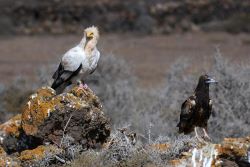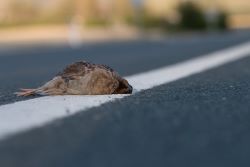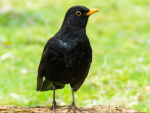 Latest News
Latest News
 Las limitaciones a la caza con plomo reducen las concentraciones de este metal tóxico en la sangre de los guirres canarios
Las limitaciones a la caza con plomo reducen las concentraciones de este metal tóxico en la sangre de los guirres canarios
El guirre canario estuvo al borde de la extinción a finales del siglo XX. En aquel momento, se detectó que el plomo era un grave problema para la supervivencia de su población. El trabajo ha sido...
 One out of three roadkilled animals goes undetected by science
One out of three roadkilled animals goes undetected by science
Animals may escape and die away from the road after the collision, rebound off the road or retain by vehicle. In these cases, it is so extremely difficult to be recorded through typical roadkill...
 Identifican nuevos linajes de parásitos sanguíneos exclusivos de aves que habitan en entornos urbanos
Identifican nuevos linajes de parásitos sanguíneos exclusivos de aves que habitan en entornos urbanos
Los resultados del estudio han revelado que algunos parásitos del género Plasmodium, responsables de la malaria aviar, son más diversos en la ciudad que en el campo, presentando algunos linajes que...
 Invasive blue crabs can travel more than 100 km upstream
Invasive blue crabs can travel more than 100 km upstream
Scientists from the Doñana Biological Station – CSIC warns of the capacity of the blue crab to invade river stretches located far from river mouths. This migrating capacity of blue crabs...
 Easter rains bring relief to Doñana, but more rainfall is needed this spring
Easter rains bring relief to Doñana, but more rainfall is needed this spring
145.3 l/m2 have been collected during March, mostly during Easter, according to ICTS-Doñana data. Rains come late for wintering, but will still be useful for waterfowl breeding. The annual...
— 5 Items per Page





